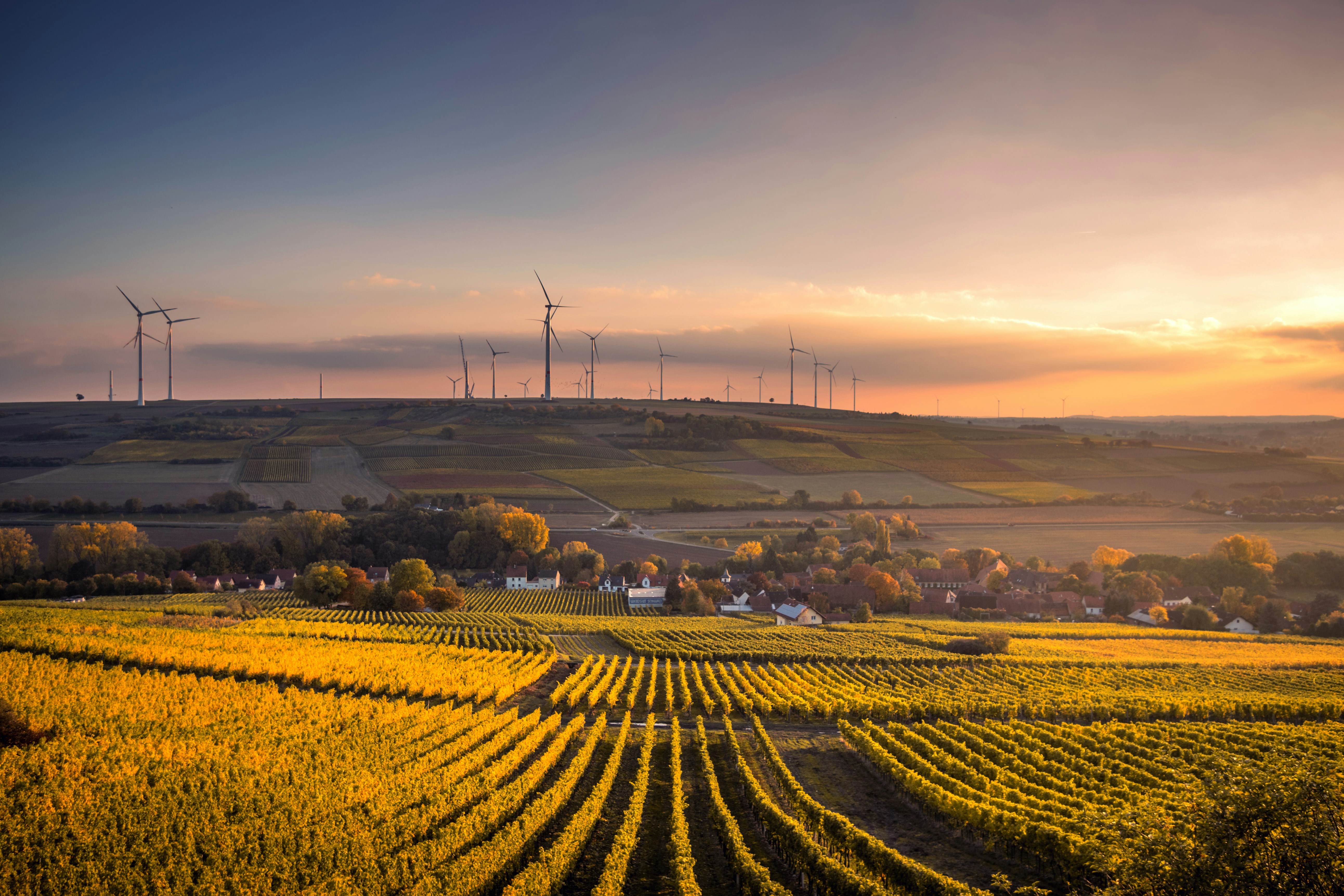Agriculture & Climate Change: Capturing solutions for mitigation
In the face of a rapidly changing climate, agriculture is a crucial player capable of contributing to and mitigating environmental challenges. The climate crisis, evidenced by extreme weather events, shifting climate patterns, and ecological degradation, threatens global food security. With the world’s population projected to approach 10 billion within the next 25 years, our agri-food systems must evolve to meet the growing demand for nutritious and high-quality food.
The Dual Role of Agriculture
Currently, the agri-food sector supports the livelihoods of one-eighth of the global population. Since 1961, the per capita food supply has increased by 30%, mainly due to the Green Revolution. This era saw significant technological advancements, such as the introduction of synthetic pesticides, fertilizers, modern irrigation systems, and innovative plant breeding techniques in the crop production process. These developments increased yields like never before but also contributed to almost 25% of greenhouse gas (GHG) emissions, primarily from carbon dioxide (CO2), methane (CH4), and nitrous oxide (N2O).
Embracing Sustainability
Sustainable practices are essential to mitigate agriculture’s impact on climate change. Initiatives like the EU Green Deal and the Farm to Fork strategy underscore the importance of adopting sustainability within the agri-food industry. Sustainable agriculture aims to produce food, feed, fiber, and high-value products in ways that are economically feasible, environmentally safe, and socially equitable. This approach ensures that current needs are met without compromising the ability of future generations to meet theirs.
Carbon Capture in Agriculture
Integrating carbon capture with sustainable agriculture enhances these efforts by sequestering CO2 from the atmosphere and reducing overall GHG emissions. Here are vital practices that illustrate this integration:
1.Soil Carbon Sequestration
- Conservation Tillage: Minimizing tillage to maintain soil structure, improve water retention, and increase organic matter.
- Cover Cropping: Planting cover crops during off-seasons to protect soil, enhance organic matter, and fix atmospheric nitrogen.
- Crop Rotation: Diversifying crops to improve soil health, reduce pest cycles, and increase organic matter.
- Agroforestry: Integrating trees and shrubs into farming systems to sequester carbon in biomass and soil.
- Biochar Application: Adding biochar to soils increases carbon storage, improves fertility, and enhances microbial activity.
3.Improved Crop Varieties
- High-Biomass Crops: Developing crops that produce more biomass and have deeper roots for better carbon storage.
4.Organic Farming
- Composting: Using organic waste to enrich soil with organic matter.
- Green Manure: Plants grow specifically to be plowed back into the soil.
5.Grazing Management
- Rotational Grazing: Moving livestock between pastures promotes plant regrowth and enhances soil carbon sequestration.
- Silvopasture: Combining forestry and grazing to sequester carbon in trees and soil.
6.Wetland and Peatland Restoration
- Restoration Projects: Rewetting and restoring wetlands and peatlands to sequester carbon and prevent CO2 emissions.
- Data-Driven Practices: Using technology to optimize inputs and improve crop yields.
8.Perennial Crops
- Perennial Grains and Forages: Planting crops with long life cycles and extensive root systems for enhanced soil carbon storage.
Benefits of Integrating Carbon Capture in Sustainable Agriculture
Combining sustainable agriculture with carbon capture offers multiple benefits:
- Climate Mitigation: Reducing atmospheric CO2 levels.
- Enhanced Soil Health: Improving soil structure, fertility, and water retention.
- Biodiversity: Supporting diverse ecosystems and resilience to pests and diseases.
- Economic Benefits: Reducing input costs and improving farm profitability.
- Social Impact: Promoting food security and supporting rural communities.
Things to consider
Despite the benefits, several challenges must be addressed:
- Measurement and Verification: Developing accurate methods to quantify carbon sequestration.
- Economic Incentives: Creating the financial motivation for farmers to adopt sustainable practices.
- Policy Support: Ensuring supportive policies and frameworks from policymakers.
- Knowledge and Training: Educating farmers on best practices for sustainability and carbon sequestration through vocational training programs.
Looking forward
Sustainable agriculture and carbon capture prospects are promising, with technological advancements and practices expected to optimize resource use and enhance carbon sequestration. Increased policy and financial support, ongoing research and development, and the upscaling of successful models will result in the widespread adoption of such practices. Enhanced collaboration, knowledge sharing, and public awareness will further empower farmers and increase consumer demand for sustainably produced food. These integrated efforts will improve agricultural resilience to climate change, contributing to climate mitigation, food security, and environmental sustainability.
Conclusion
Sustainable agriculture combined with carbon capture practices presents a holistic solution to food production challenges, balancing environmental, economic, and social goals. By focusing on soil health, biodiversity, resource efficiency, and community support, these integrated practices contribute to climate mitigation and enhance the resilience and sustainability of our agricultural systems.
References
- Altieri, M. A., & Nicholls, C. I. (2017). The adaptation and mitigation potential of traditional agriculture in a changing climate. Climatic change, 140, 33-45.
- Andrés, P., Doblas-Miranda, E., Rovira, P., Bonmatí, A., Ribas, À., Mattana, S., & Romanyà, J. Agricultural Potential in Carbon Sequestration. Humus Content of Land Used for Agriculture and CO2 Storage, 699-655.
- Atlin, G. N., Cairns, J. E., & Das, B. (2017). Rapid breeding and varietal replacement are critical to adapting cropping systems in the developing world to climate change. Global food security, 12, 31-37.
- Chowdhury, S., Bolan, N., Farrell, M., Sarkar, B., Sarker, J. R., Kirkham, M. B., … & Kim, G. H. (2021). Role of cultural and nutrient management practices in carbon sequestration in agricultural soil. Advances in agronomy, 166, 131-196.
- Gitz, V., Meybeck, A., Lipper, L., Young, C. D., & Braatz, S. (2016). Climate change and food security: risks and responses. Food and Agriculture Organization of the United Nations (FAO) Report, 110, 2-4.
- IPCC, 2019: Climate Change and Land: an IPCC special report on climate change, desertification, land degradation, sustainable land management, food security, and greenhouse gas fluxes in terrestrial ecosystems.
- Lal, R. (2004). Soil carbon sequestration impacts on global climate change and food security. science, 304(5677), 1623-162
- Lynch, J., Cain, M., Frame, D., & Pierrehumbert, R. (2021). Agriculture’s contribution to climate change and its role in mitigation is distinct from predominantly fossil CO2-emitting sectors—frontiers in sustainable food systems, 4, 518039.
- Malhi, G. S., Kaur, M., & Kaushik, P. (2021). Impact of climate change on agriculture and its mitigation strategies: A review: Sustainability, 13(3), 1318.
- Mbow, C., Rosenzweig, C. E., Barioni, L. G., Benton, T. G., Herrero, M., Krishnapillai, M., … & Diouf, A. A. (2020). Food security (No. GSFC-E-DAA-TN78913). IPCC.
- Pisante, M., Stagnari, F., Acutis, M., Bindi, M., Brilli, L., Di Stefano, V., & Carozzi, M. (2015). Conservation agriculture and climate change. Conservation agriculture, 579-620.
- United Nations Department of Economic and Social Affairs, Population Division (2022). World Population Prospects 2022: Summary of Results. UNDESA/POP/2022/TR/NO.











































































